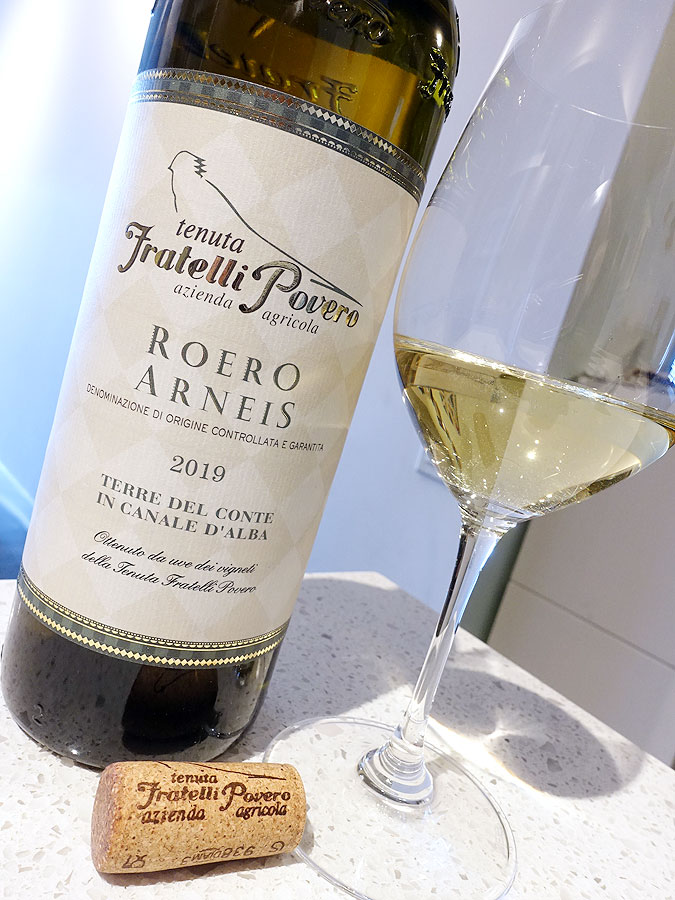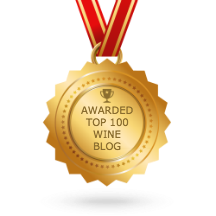To celebrate , wine review is a lovely white wine made with the Arneis varietal from its native home in Piedmont and arrived at the LCBO last weekend as part of the feature on wines from Piedmont in the LCBO VINTAGES Release on .
It is produced by Cantine Povero, a family that has been winemaking on the lands of Roero, Monferrato, and Langhe in Piedmont for almost 200 years. In 1948, Grandfather Tumlin planted his first vineyard and felt a strong emotional bond towards the land and pride to continue the traditions of his ancestors, whose roots go back to 1837.
In 1976, the sons of Tumlin, brothers Giovanni and Michelino Povero acquired their current headquarters in Cisterna d'Asti, at the foot of a medieval castle in Piedmont and planted 10 hectares of vineyards to expand their production. In 1987, Giovanni's three sons founded Tenuta Fratelli Povero where they produce wines from the best grapes of the oldest vineyards in the Roero area. The winery was renovated in 1998, and in 2010 they installed an innovative photovoltaic system that satisfies most of their energy needs with renewable sources. Dedicated to both tradition and innovation, the 3rd and 4th generation of the family is leading the winery into the future with a strong commitment to nature, while also transforming its fruits into wines that delight.
The name 'Arneis' literally translates into 'little rascal' in Piemontese and is so called because this varietal is somewhat difficult to grow. However, it has found a home in the hills of the Roero, northwest of Alba, where it is part of the DOCG wines of Roero. This particular Arneis comes from Tenuta Fratelli Povero's own organic vineyards in the hilly, sandy, and clayey soils of Roero. The grapes were manually harvested and fermented in stainless steel tanks, while also spending 2-3 months sur lie. Let's see how this Arneis is tasting tonight...
This organically grown Arneis has a medium+ intensity nose that leads with mineral followed by lovely ripe, lemon citrus, green apple, and yellow floral with delicate hints of honey. The medium-bodied, ripe palate is creamy and dry with honeyed notes of floral, citrus, pear, and apple and subtle spice flavours. It has very good, well-balanced acidity with notes of oyster shell minerality, lemon, apple, and pear lingering on the juicy finish, with very good length. Lovely! Score: 89 pts
Other lovely wines from Cantine Povero can be ordered through their Agent - Rare Earth Wines.
It is produced by Cantine Povero, a family that has been winemaking on the lands of Roero, Monferrato, and Langhe in Piedmont for almost 200 years. In 1948, Grandfather Tumlin planted his first vineyard and felt a strong emotional bond towards the land and pride to continue the traditions of his ancestors, whose roots go back to 1837.
In 1976, the sons of Tumlin, brothers Giovanni and Michelino Povero acquired their current headquarters in Cisterna d'Asti, at the foot of a medieval castle in Piedmont and planted 10 hectares of vineyards to expand their production. In 1987, Giovanni's three sons founded Tenuta Fratelli Povero where they produce wines from the best grapes of the oldest vineyards in the Roero area. The winery was renovated in 1998, and in 2010 they installed an innovative photovoltaic system that satisfies most of their energy needs with renewable sources. Dedicated to both tradition and innovation, the 3rd and 4th generation of the family is leading the winery into the future with a strong commitment to nature, while also transforming its fruits into wines that delight.
The name 'Arneis' literally translates into 'little rascal' in Piemontese and is so called because this varietal is somewhat difficult to grow. However, it has found a home in the hills of the Roero, northwest of Alba, where it is part of the DOCG wines of Roero. This particular Arneis comes from Tenuta Fratelli Povero's own organic vineyards in the hilly, sandy, and clayey soils of Roero. The grapes were manually harvested and fermented in stainless steel tanks, while also spending 2-3 months sur lie. Let's see how this Arneis is tasting tonight...
Tasting Note:
TENUTA FRATELLI POVERO TERRE DEL CONTE ROERO ARNEIS 2019 - DOCG, Piedmont, Italy (#436915) (XD) - $17.95This organically grown Arneis has a medium+ intensity nose that leads with mineral followed by lovely ripe, lemon citrus, green apple, and yellow floral with delicate hints of honey. The medium-bodied, ripe palate is creamy and dry with honeyed notes of floral, citrus, pear, and apple and subtle spice flavours. It has very good, well-balanced acidity with notes of oyster shell minerality, lemon, apple, and pear lingering on the juicy finish, with very good length. Lovely! Score: 89 pts
Other lovely wines from Cantine Povero can be ordered through their Agent - Rare Earth Wines.






















